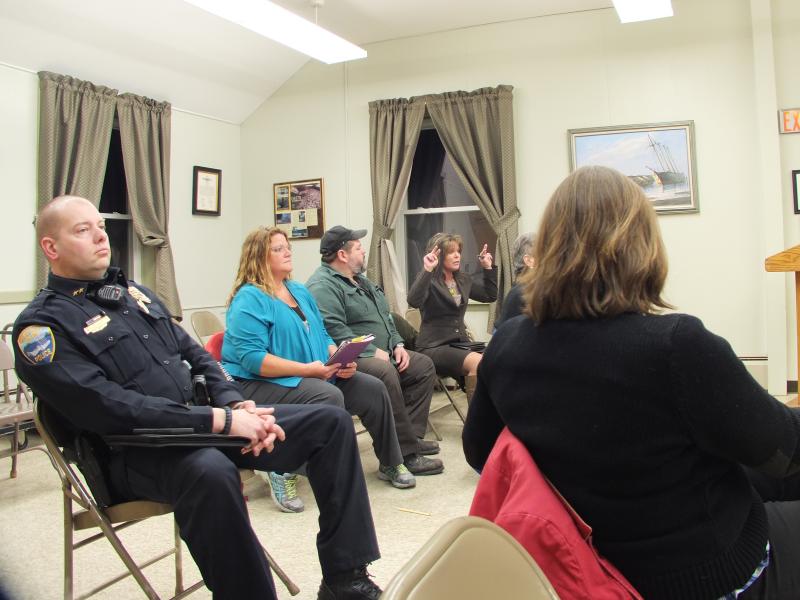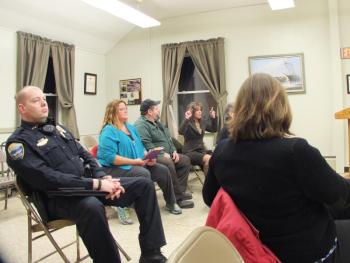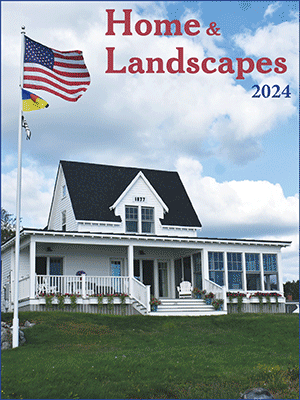Panel examines pros, cons of revised downtown plan
At the Jan. 23 meeting of the Wiscasset Downtown Public Advisory Committee, the group was told to go and look at the options that were suggested, including one-way traffic halfway down Water Street toward the piers, a dedicated left turn lane onto Water Street in both directions, another dedicated left turn lane onto Railroad Avenue, and a couple of bump-outs that would provide sheltered areas for passenger drop-offs and pick-ups and deliveries.
When the group came back, it discussed what members liked and disliked about the revised plan.
Many thought Water Street toward the west should be one-way the entire way, with another side street – Middle or Fore, for example – serving as the return street to Route One/Main Street. Since part of the reason for the proposal for Water Street to be one way is to allow boat trailers to easily maneuver without on-street parking or oncoming traffic, the return street would have to be able to accommodate the boats leaving the recreational pier, and would require a route without low overhead wires or sharp turns, and may also have to be one-way.
Others did not like this idea, and proposed no left turn lane and no one-way system at all. Some pointed out that the proposed parking lot, at the current site of Haggett’s Garage, is not yet under contract and there may not be a parking lot there. Having a new traffic pattern that would only be one-way part of the way would be confusing to motorists and dangerous to pedestrians, they argued.
Another issue that members felt to be important was doing away with a concrete barrier in the proposed parking lot on Railroad Avenue, to make more room for parking and to allow traffic to move around more freely. There was more consensus on this issue.
General Manager Deborah Gagnon, and two other owners, of Red’s Eats attended the meeting. Gagnon said it was the first time she’d attended one of the committee’s meetings, but wanted to discuss what she thought would be good for her business as well as the other downtown merchants. She learned that the plan for the Red’s Eats queue is to be located along Water Street, on a double sidewalk in front of the other shops, and strenuously objected to the plan. “The other merchants won’t like it at all,” she said. “We paid for the additional sidewalk on Main Street.”
Maine Department of Transportation’s Project Manager, Ernie Martin, told the group that for safety reasons, the line would have to be on Water Street. Gagnon also had questions about deliveries, and was told the current delivery system at the corner of Water and Main streets would not be allowed anymore. “But it’s painted right on the sidewalk, it’s a legal delivery zone,” she said.
Martin said that whatever the town’s ordinances might allow, the delivery zone is not legal from a state perspective. “It would be in the middle of the new crosswalk,” he told her. Also no longer possible would be a waiting zone in the same location for disabled patrons who had been giving orders from their vehicles.
Another issue for Red’s Eats involved the seasonal portable toilets the business puts out next to the dumpster behind a screening fence along Railroad Avenue. That structure, Martin informed them, was in the railroad’s right of way and would have to be removed. He said the town would have to consider what it wanted to do about public toilets, possibly locating them in the parking lots. He had no suggestion about Red’s Eats’ dumpster.
The committee considered a few mitigating ideas, such as decreasing the amount of sidewalk on the east side of the street, in front of Sarah’s to allow the extra sidewalk on the west side, in front of Red’s Eats, but Martin said it would still be a safety hazard, and tried to assure the Gagnons that the line along Water Street would not affect neighboring businesses, because the sidewalk would be much wider.
There will be several more meetings before final decisions are reached. According to projections, the changes will decrease traffic jams through the village from three miles to about one mile in peak season, while offering better protection for pedestrians and bicyclists.
Event Date
Address
United States
























